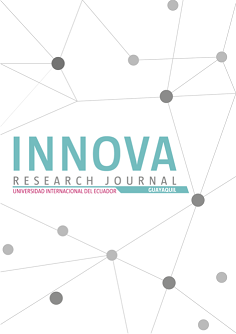Analysis of a autopart supply chain
Main Article Content
Abstract
The paper consists of the analysis of the structure and functioning of a supply chain of auto parts in the automotive sector, considering the new logistic articulation schemes involved in the links of the chain so that they function as a homogeneous production system, comply with the specifications and times required. The supply of auto parts is considered the main factor of success in the automotive industry, determining the quality of the environment and productivity, for which the management and logistics administration of the supply of the auto parts is analyzed, considering some relevant factors of the automotive sector from the point of view of various authors who have studied the subject and then identify the operational schemes in the supply of auto parts. It analyzes the dynamics of the automotive sector worldwide and describes the macroeconomic characteristics of the manufacturing industry and auto parts in Mexico, then considers factors of demand and management strategies used by automotive assemblers, visualizes the structure and functions of the members of the supply chain and the current practices of automotive components procurement and in the end the conclusions derived from the study carried out are presented.
Downloads
Article Details
COPYRIGHT NOTICE
Authors who publish in the INNOVA Research Journal keeps copyright and guarantee the journal the right to be the first publication of the work under the Creative Commons License, Attribution-Non-Commercial 4.0 International (CC BY-NC 4.0). They can be copied, used, disseminated, transmitted and publicly exhibited, provided that: a) the authorship and original source of their publication (magazine, publisher, URL and DOI of the work) is cited; b) are not used for commercial purposes; c) the existence and specifications of this license of use are mentioned.
References
Aguilar-Pérez, P. &.-C. (2015). Esquema de condicionantes en la relación proveedor-cliente en la industria automotriz. Caso sector autopartes en la Zona del Bajío. Dirección y Organización 56, 57-67.
Álvarez Medina, M. (2002). Cambios en la industria automotriz frente a la globalización: el sector de autopartes en México. Contaduría y Administración, (206), 29-49.
Bohórquez Cruz, M. F. (2016). Análisis de los factores de diferenciación del flujo comercial del sector autopartes México-Colombia (2010-2014).
Contreras, O. F. (2006). Redes de producción global y aprendizaje local: El caso de Ford en Hermosillo . V Congreso Nacional de la Asociación Mexicana de Estudios del Trabajo.Oaxtepec, Morelos.
Duràn, A. (Abril de 2018). Sube México en ranking de exportación de autopartes. Obtenido de http://www.elfinanciero.com.mx/empresas/sube-mexico-en-ranking-de-exportacion-de-autopartes.
Escobedo Torres, C. &. (2018). El Escenario Global–Local: Nissan En Aguascalientes.
Head, K. (Noviembre de 2015). Word Economic Forum.Obtenido de https://www.weforum.org.
INA. (2018). Industria Nacional de Autopartes. Obtenido de https://www.ina.com.mx/.
Liker, J. K. (2006). Japanese automakers, US suppliers and supply chain superiority. Supply Chains and Total Product Systems: A Reader.
Moreno, F. M. (2016). Vehículos Eléctricos. Historia, Estado Actual Y Retos Futuros. European Scientific Journal, ESJ, 12(10).
Norma ISO 9001:2008. (2008). Modelo de un sistema de gestión de la calidad basado en procesos.
ProMèxico. (2016). La Industria Automotriz Mexicana: Situación Actual, Retos Y Oportunidades. Mèxico.
Sánchez, M. &. (2017). Análisis, diagnóstico y propuesta de mejora para una cadena de suministro de autopartes enel Perú utilizando el modelo SCOR.
SE. (2018). Secretaria De Economia. Obtenido de http://www.economia.gob.mx/files/comunidad_negocios/industria_comercio/Monografia_Industria_Automotriz_MARZO_2012.pdf.
Sintec. (2012). http://www.sintec.com/expertise/consultoria-en-cadena-de-suministro/. Obtenido de http://www.sintec.com/expertise/consultoria-en-cadena-de-suministro/.
Viveros, J. C. (2014). El auge de la industria automotriz en México en el siglo XXI. Reestructuración y catching up.






